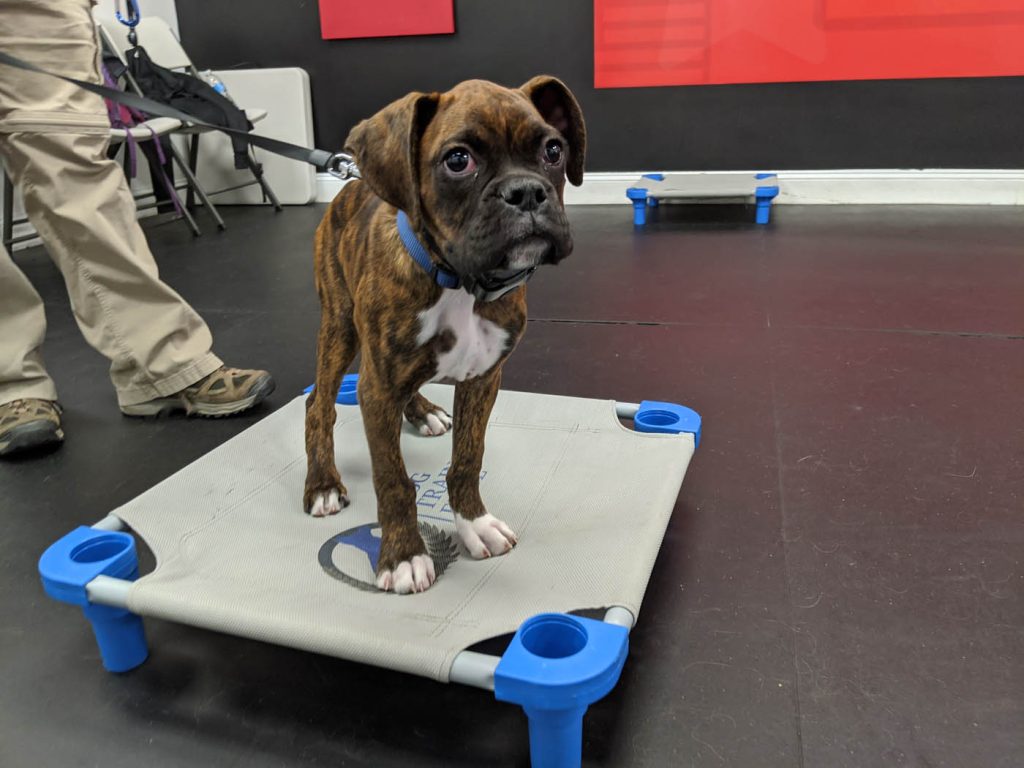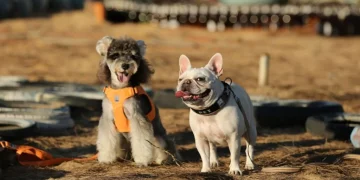Bringing a new puppy into your home is an exciting experience, but it also comes with the responsibility of providing the right training to ensure your puppy grows up to be a well-behaved and happy dog. Puppy training is crucial for building a strong bond with your furry companion and teaching them good behaviors that will last throughout their life. This comprehensive guide will cover the basic training techniques every new puppy owner should know, including how to introduce your puppy to their new home, socialization, crate training, housebreaking, and basic obedience commands.
1. Preparing Your Home for a New Puppy
Before bringing your puppy home, it’s important to prepare your environment to ensure a safe and welcoming space for them. Setting up your home properly will help you establish good habits from day one.
1.1. Creating a Puppy-Friendly Space
Designate a specific area where your puppy can feel secure, such as a crate or a comfortable bed. This space should be free from hazards like electrical cords, small objects that could be swallowed, or anything dangerous.
1.2. Essential Supplies for Your Puppy
Ensure you have all the necessary supplies for your puppy:
- Food and water bowls: Make sure they are appropriately sized for your puppy.
- A comfortable bed: This will be their designated resting area.
- A crate: Essential for crate training and providing a safe space.
- Toys and chew items: Puppies love to chew, so provide safe chew toys to redirect them from furniture.
- Leash and collar: For walks and leash training.
- Puppy food: Ensure you’re feeding your puppy high-quality food that meets their nutritional needs.
2. Establishing a Routine
Puppies thrive on routine, and having a consistent schedule will help them feel secure and understand what is expected of them. Establishing a routine from day one helps prevent behavioral issues and supports housebreaking and training efforts.
2.1. Feeding Schedule
Feed your puppy at the same time each day, and provide the recommended amount of food for their breed, age, and weight. Regular feeding times help set their internal clock and ensure they have the energy they need to play and learn.
2.2. Potty Training Schedule
Consistency is key for housebreaking your puppy. Take them outside at regular intervals, such as after meals, after naps, and before bedtime. Always praise them when they go potty outside and avoid punishment for accidents inside, as puppies do not associate punishment with actions that occurred in the past.
2.3. Play and Exercise
Puppies are full of energy, so make sure they have plenty of opportunities to play and exercise. Regular playtime helps burn off excess energy, which can prevent undesirable behaviors like chewing, barking, or digging.
3. Socialization: Teaching Your Puppy to Be Well-Adjusted
Proper socialization is one of the most important aspects of puppy training. Socializing your puppy at a young age helps them become well-adjusted, confident, and comfortable around different people, pets, and environments.
3.1. Introducing Your Puppy to New People
Expose your puppy to a variety of people, including children, adults, and other animals, in a positive and controlled manner. The more experiences they have early on, the more likely they will grow up to be friendly and well-mannered dogs.
3.2. Introducing Your Puppy to Other Dogs
Socializing with other dogs is crucial for your puppy’s development. Arrange playdates with other vaccinated dogs or take them to a puppy socialization class. It helps them learn proper play behavior, dog etiquette, and boosts their confidence.
3.3. Acclimating to Different Environments
Expose your puppy to various environments, such as the car, park, and pet-friendly stores. Gradually introduce them to new sights, sounds, and smells to help them become well-rounded and adaptable dogs.

4. Basic Obedience Training
Teaching your puppy basic commands is the foundation of good behavior. Start training your puppy early, using positive reinforcement techniques like treats, praise, and play. Keep training sessions short and fun, and be patient as your puppy learns.
4.1. Sit Command
The “sit” command is one of the first things you should teach your puppy. It’s a simple and useful command that can be used in various situations. Here’s how to teach it:
- Hold a treat in your hand and let your puppy sniff it.
- Slowly move the treat above their nose and toward the back of their head.
- As your puppy’s bottom touches the ground, immediately say “sit” and reward them with the treat.
- Repeat several times until they reliably sit when asked.
4.2. Stay Command
The “stay” command helps with impulse control and keeping your puppy in place. Here’s how to teach it:
- Start by asking your puppy to sit.
- Hold your hand out in front of them, palm facing them, and say “stay.”
- Take one step back. If your puppy stays in place, reward them with praise and a treat.
- Gradually increase the distance and duration of the stay.
4.3. Come Command
The “come” command is essential for your puppy’s safety. It ensures they return to you when called, especially in potentially dangerous situations.
- Begin by calling your puppy’s name and saying “come” in an enthusiastic tone.
- When they approach you, reward them with a treat and praise.
- Practice this in a controlled area first before progressing to more distracting environments.
4.4. Leave It Command
The “leave it” command teaches your puppy to stop whatever they are doing and focus on you, which is useful when they are about to grab something dangerous or undesirable.
- Hold a treat in your closed fist and let your puppy try to get it.
- When they stop trying and back off, say “leave it” and reward them with a different treat.
- Practice in various situations where they might try to grab something.
5. Crate Training: Creating a Safe Space for Your Puppy
Crate training is an important part of puppy training that helps your puppy feel secure and comfortable when they are alone. A crate also serves as a tool for housebreaking and preventing destructive behavior.
5.1. Introducing the Crate
Make the crate a positive and inviting space. Place soft bedding and a few toys inside. Start by encouraging your puppy to explore the crate on their own, offering treats and praise when they enter. Never force your puppy into the crate, as this can create negative associations.
5.2. Crate Training for Sleep
Use the crate at night to help with housebreaking and ensure your puppy has a safe and comfortable place to sleep. Initially, you may need to take your puppy outside during the night to prevent accidents, but over time, they will learn to hold their bladder through the night.
5.3. Crate Training for Alone Time
Gradually increase the amount of time your puppy spends in the crate while you are home. Start with short periods and slowly build up to longer durations. This will help your puppy become comfortable being alone in the crate when you’re not around.
6. Dealing with Common Puppy Behavior Problems
During the training process, you may encounter common behavioral issues, such as chewing, barking, or jumping. Addressing these behaviors early on will help prevent them from becoming habits.
6.1. Chewing
Puppies are naturally inclined to chew, especially during teething. Redirect their attention to appropriate chew toys and discourage chewing on furniture or shoes. If they do chew on something they shouldn’t, calmly remove the object and give them a chew toy instead.
6.2. Barking
Puppies may bark for attention, excitement, or anxiety. Ignore excessive barking and reward them with attention when they are quiet. Training your puppy to “speak” on command can also help manage barking.
6.3. Jumping
Jumping is a common behavior in puppies, especially when greeting people. To discourage jumping, avoid reinforcing it by not giving attention when your puppy jumps. Instead, reward them for sitting calmly when greeting you or guests.
7. Conclusion: Setting Your Puppy Up for Success
Training your puppy is an ongoing process that requires patience, consistency, and positive reinforcement. By providing a structured routine, socializing your puppy, teaching basic commands, and using crate training, you’ll set your puppy up for a successful life as a well-mannered and happy adult dog. Early training helps build a strong bond between you and your puppy, making your relationship even more rewarding.
Remember, every puppy is unique, so adapt your training techniques to your puppy’s temperament and needs. With time, love, and effort, your puppy will grow into a loyal and well-behaved companion.
























































